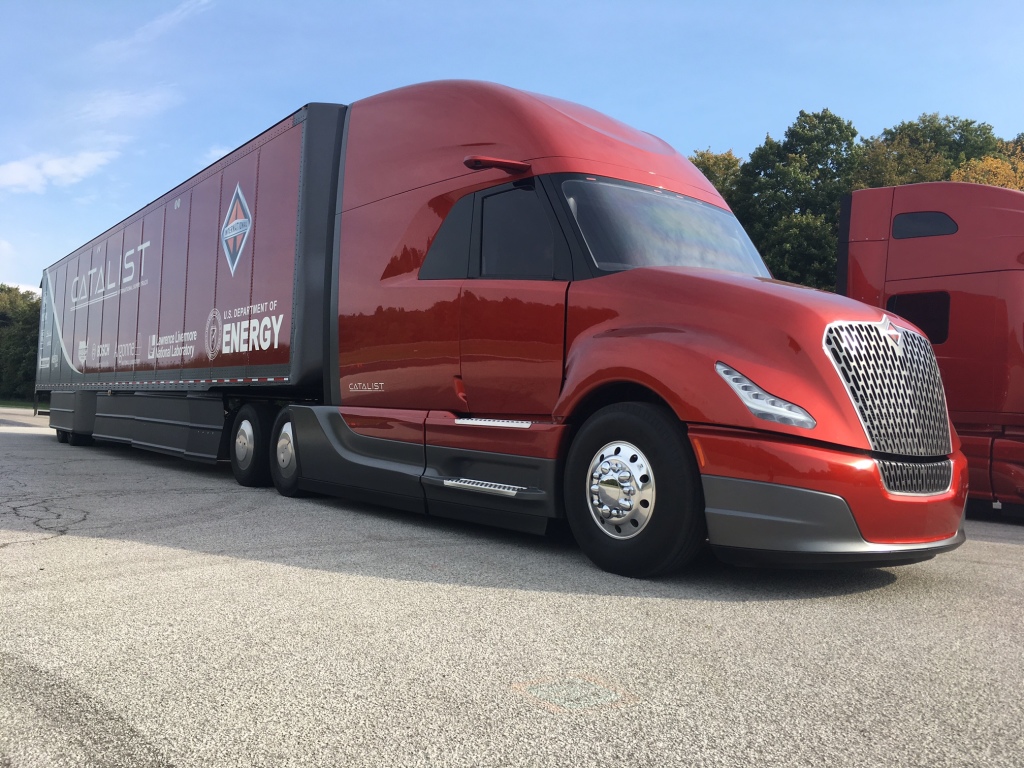Why Canadian truckers owe a debt of gratitude to this U.S. agency
If your fleet is taking advantage of some of the most recent engine advancements to improve fuel economy, you should thank the U.S. Department of Energy.
The DoE, through its SuperTruck program, has already helped contribute to the commercialization of technologies being used on roads today to reduce fuel spend and slash emissions. Are you running the latest Volvo engines with a wave piston design? It was developed through SuperTruck. What about the new turbcompounding spec’? That too, a SuperTruck development.
Even if you’re running traditional spec’s, some of the improved aerodynamics on current models, which contribute to your fuel economy were designed through, you guessed it, SuperTruck.
It would not be a stretch to say SuperTruck has been one of the most successful public-private partnerships the trucking industry has seen. Even though it was initiated south of the border, those technologies that emerge from it ultimately end up in Canadian fleets and on Canadian roads and hey, we Canadian taxpayers get a free ride. And with the cost of fuel rapidly climbing in light of global conflict, there’s never been a better time to appreciate fuel economy.
Truck OEMs that have taken part in the SuperTruck1 (from 2010-2015) and 2 (2017-2022) programs spoke of the achievements the projects have contributed to at the spring meetings of the Technology & Maintenance Council. Navistar’s vice-president of powertrain, Darren Gosbee, spoke of powertrain fuel efficiency in the first round, which ultimately translated into commercial production of its LT highway model.

It tested and validated downspeeding, lower peak torque, 2.15 rear axle ratios, and improved aero and fairings. The second version of the program, which concludes this year, focused on rolling resistance, weight reduction, and further powertrain efficiencies.
“We’re on track to demonstrate freight efficiency greater than 140% [against a 2009 baseline],” Gosbee said of this year’s program, “significantly higher than the requirement of the program.”
The advancements don’t end at the tractor, either. Navistar’s program includes installing solar panels on the trailer, trailer weight reduction, and rolling resistance reduction. Its partner TPI Composites built a fully composite trailer out of a single piece of material, no rivets, joints or seams.
Gosbee’s counterpart at Volvo, Keith Brandis, raved of the program that it’s “the best use of public-private funding available…This is a sandbox for engineers to go and play in, but it has to address the problems of the industry. Not everything is going to work. Not everything is going to be available for you to buy. We know drivers are going to tear it up and we know some days it’s going to be on the side of the road.”
But the wave piston design, turbocompounding, new aero trimmings, and a shorter hood all became commercial realities for Volvo after SuperTruck validation. SuperTruck 3 will focus on zero emissions vehicles, with Volvo aiming to develop a battery-electric vehicle with a 400-mile range that can be in the market within a couple years. “The SuperTruck program is this industry’s answers to the challenges we have,” said Brandis.
Darek Villeneuve, principal investigator for Daimler Trucks North America’s SuperTruck program, said developments from the program include: a new hood, bumper, mirrors, and chassis side fairings. It also developed a way to close the trailer gap at highway speeds. It will be focusing on a hydrogen fuel cell truck with a range of 600 miles and payload parity with diesel as part of SuperTruck 3. To give you a sense of the cost of developing these technologies, Daimler is matching the DOE’s US$28.5 million contribution over five years for ST3.
Martin Meijer, representing Paccar as principal investigator, said aerodynamics, predictive cruise, a mono leaf front axle, and engine enhancements all came from ST1 and ST2 projects. For the next go-round, it plans to develop a battery-electric truck with optimized chassis, and improvements to advanced driver assistance systems, a next-gen electric powertrain, high-power charging, and route and cost optimization tools.
The DOE SuperTruck program is speeding the development and commercialization of the technologies that are going to not only save your fleet money, but assist the trucking industry achieve its ambitious and highly important zero-emissions targets.
Have your say
This is a moderated forum. Comments will no longer be published unless they are accompanied by a first and last name and a verifiable email address. (Today's Trucking will not publish or share the email address.) Profane language and content deemed to be libelous, racist, or threatening in nature will not be published under any circumstances.
Lower costs will be eaten up by all those that think the savings should be theirs